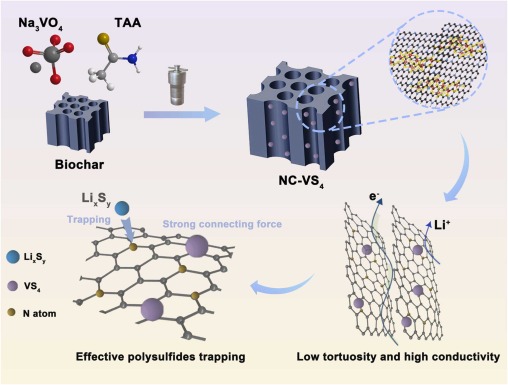
Corn-Powered Innovation: How a Natural Protein Could Transform Lithium-Sulfur Batteries
In the ongoing global endeavor towards renewable energy and sustainable technologies, batteries are essential — powering everything from electric vehicles to harnessing energy from wind and solar farms. However, issues such as limited cycle lifespan, environmental impacts, and elevated costs hamper the efficiency of advanced batteries. Recently, researchers at Washington State University (WSU) have discovered an unexpected ally in grappling with some of the most formidable challenges in battery advancement: corn.
In a groundbreaking study published in the Journal of Power Sources, WSU scientists revealed that a protective layer made from zein — a natural protein sourced from corn — greatly enhances the performance of lithium-sulfur (Li–S) batteries. When integrated with a small quantity of plastic, this corn-based membrane enables the modified battery to maintain its charge for more than 500 cycles — a remarkable enhancement that may accelerate the adoption of greener, more effective energy storage solutions.
A Promising Yet Challenging Technology
Lithium-sulfur batteries have long been recognized as a next-generation energy alternative. In comparison to their lithium-ion equivalents — which currently dominate the market in devices from smartphones to electric vehicles — Li–S batteries present several advantages:
– They have the capability to store nearly five times more energy per unit weight.
– They utilize sulfur, a plentiful and inexpensive byproduct, rather than rare and harmful materials like cobalt or nickel typically present in lithium-ion batteries.
– They contribute to a reduced environmental impact both in terms of production and disposal.
However, despite this potential, lithium-sulfur batteries have encountered two major technical hurdles that have obstructed commercial progress.
1. The Shuttle Effect: During operation, soluble sulfur compounds known as polysulfides tend to migrate (“shuttle”) from the cathode to the anode. This leads to significant capacity loss and a shortened battery lifespan.
2. Dendrite Formation: As lithium metal accumulates during charging, sharp, needle-like structures called dendrites may develop on the anode. These can pierce the battery’s internal separator, possibly resulting in short circuits, fires, or overall system failures.
Nature’s Secret Ingredient: Zein
To address these challenges, the research team led by professors Katie Zhong and Jin Liu turned to zein, a corn-derived protein often utilized in food coatings and biodegradable films. High in amino acids, zein provides a versatile molecular structure that interacts with sulfur compounds and lithium ions in ways that most synthetic substances cannot.
By incorporating a zein-coated membrane into the battery as a separator — the thin barrier between the cathode and anode — the team created a straightforward yet remarkably efficient filter. The natural interactions between the amino acids in zein and the battery’s chemical environment were instrumental in limiting the shuttle effect and constraining dendrite growth, both vital for enhancing battery lifespan.
To boost the protein’s efficiency, the team combined it with a small amount of flexible plastic. This integration prevented the protein from collapsing onto itself, preserving its structural integrity during battery operation and ensuring steady ion flow.
Remarkable Testing Outcomes
In laboratory evaluations, the modified lithium-sulfur batteries displayed impressive durability:
– After 500 complete charge-discharge cycles, batteries equipped with the zein-based separator maintained 62% of their original capacity (approximately 450 mAh g⁻¹).
– In contrast, batteries with conventional separators held only 16% capacity (around 150 mAh g⁻¹) after the same number of cycles.
“This study showcased a simple and effective method for preparing a functional separator that enhances battery performance,” stated Professor Zhong. “The findings are outstanding.”
Implications and Future Prospects
The successful application of a food-derived material in a high-tech energy context presents thrilling opportunities. Due to its low cost, environmental sustainability, and broad availability, zein embodies a scalable and eco-friendly route towards more resilient lithium-sulfur batteries.
The possible applications extend beyond consumer electronics or electric vehicles. The technology could be particularly revolutionary for grid-scale energy storage systems — a crucial factor in capturing intermittent renewable energy sources such as solar or wind. These systems necessitate long-lasting, affordable batteries capable of enduring regular cycling without deterioration.
The research team is now concentrating on exploring more aspects of how zein operates at a molecular level. Through simulations and further experimentation, they aspire to pinpoint which particular amino acids play the most significant role in impeding the shuttle effect and curtailing dendrite formation — a complex challenge given the intricate nature of proteins.
“A protein is a very complicated structure,” remarked Zhong. “We need to conduct additional simulation studies to ascertain which amino acids in the protein structure can be most effective for addressing the critical shuttle effect and dendrite challenges.”
From Lab to Market
Backed by the U.S. Department of Agriculture, this initiative highlights the interdisciplinary character of clean energy research — synergizing expertise in food science, materials engineering, and electrochemistry. The team is currently seeking potential collaborations with industry partners to scale up the